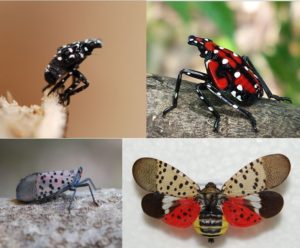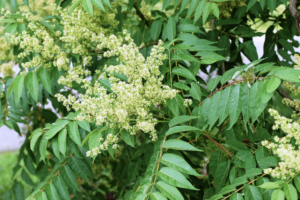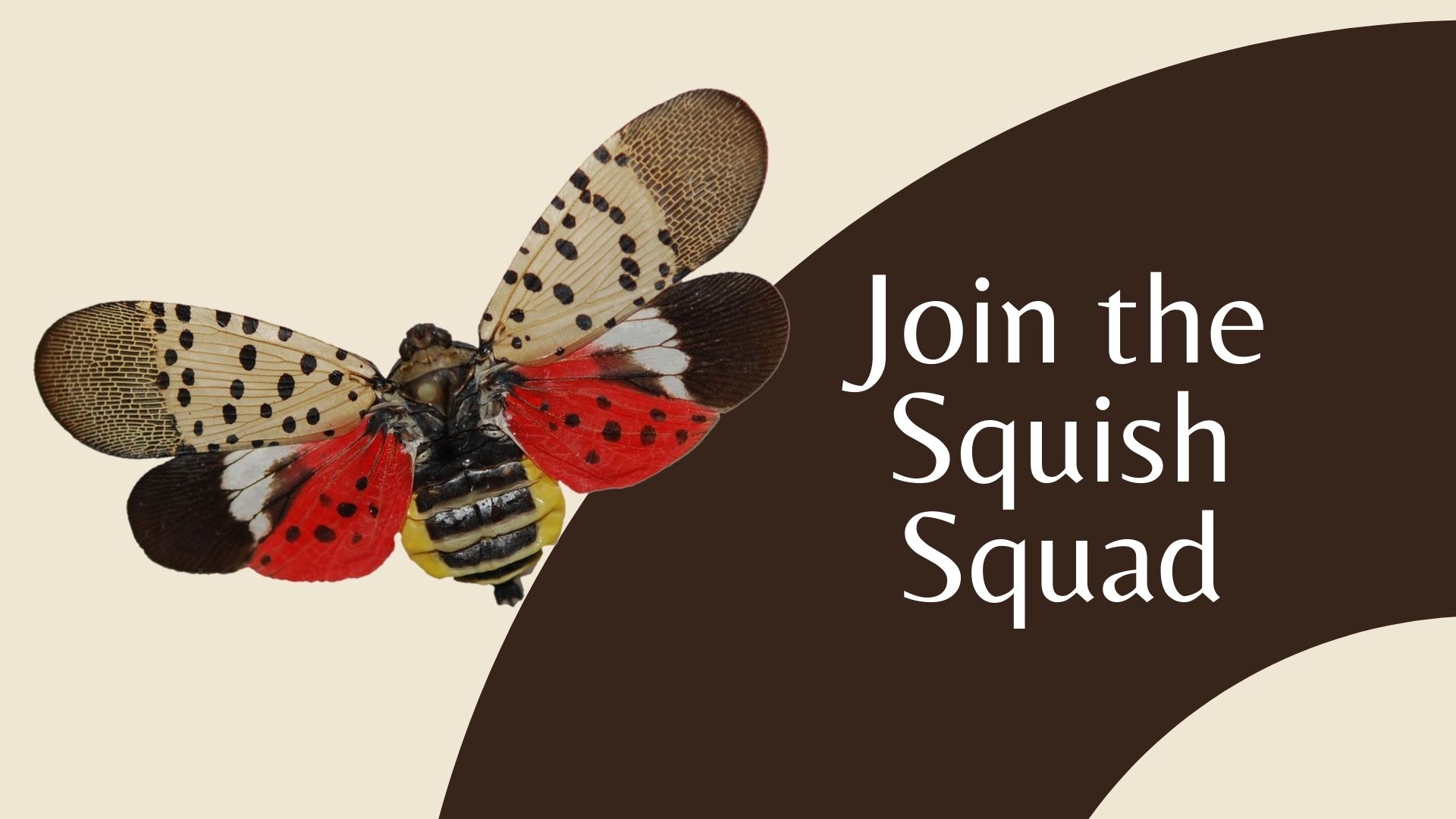Just when you thought your battle with insects (cicadas) was over, now you need to be on the lookout for the very destructive Spotted Lantern Fly. The Spotted Lantern Fly is originally from China but showed up in Pennsylvania in 2012 probably as a stow away in shipping or packing materials. As a non-native species of limited mobility without natural predators it is spreading rapidly largely through human assisted travel.
The arrival of this new pest could have a significant impact on Maryland and U.S. agriculture. The insect has spread through eastern Pennsylvania to New York, Maryland, Virginia, and New Jersey. Recently, the Kentucky Dept. of Agriculture was surprised when a specimen was included in a school bug collection project, documenting its arrival there.
Lantern fly quarantines in place in southeast Pennsylvania and portions of Delaware, Maryland, Virginia, and New Jersey prohibit their transport, and are meant to stop its spread to new areas.

Adults females lay several egg masses, one inch in size, from September through December. Each mass contains up to 50 eggs each. Eggs can survive the winter and have been spotted from September to June, on flat surfaces including tree bark, rocks, lawn furniture, RVs or anything left outdoors.
Damage from SLF feeding with its piercing-sucking mouth parts can cause stunted growth, reduced yields, and death of the host plant. As the insects feed, they excrete a sugary honeydew that collects and can attract other insects, as well as supporting growth of black sooty mold fungus that blocks sunlight from the leaves. SLF are particularly deadly to vineyards. The SLF Nymphs are adjusting to their new territories and have been found feeding on an ever-expanding list of plants, including apples, apricots, blueberries, cherries, grapes, hops, nectarines, peaches, oak, pine and poplar, among many others. 
Adults prefer—and may need—to feed on tree of heaven (Ailanthus altissima), another non-native invasive species. The tree of heaven thrives in the poor soil conditions, which exist where road construction has disturbed topsoil. It now lines many of our highways which the bug may follow to eventually spread across the Washington region. The leaves of the tree of heaven are arranged in pairs across the plant’s stem and are similar to native plants. It can be distinguished from native species by its fuzzy, reddish-brown twigs, clusters of light green seed pods and the stinky smell of its flowers.
You can help to protect local vineyards and native plants by preventing the spread of Spotted Lantern Fly in several ways. Learn the insect’s unique appearance, it has a very distinctive appearance in each stage of development. Inspect plants in your area for adults, nymphs, or eggs. Check your vehicle for SLF egg masses that might hitch a ride, remove, and destroy them. You can pull the tree of heaven seedlings by hand before the taproot develops and place ‘sticky-bands’ around mature tree of-heaven trunks to trap nymphs during their daily up and down migration. Most importantly join the Squish Squad and squish as many of these invasive insects in any stage of development.
If you see a suspect insect, trap, or photograph it, and contact Maryland Department of Agriculture at DontBug.MD@maryland.gov.
Collected dead (not squished) specimens of any stage (with information on where and when collected) can be mailed or delivered to: Maryland Department of Agriculture Plant Protection & Weed Management 50 Harry S. Truman Parkway Annapolis, MD 21401

